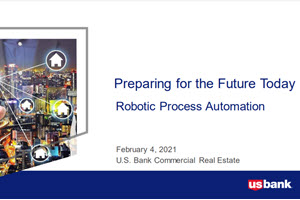Avoiding payment hiccups with account validation
APIs are helping companies prevent fraud and securely verify account ownership and status before sending payments.
For example, if an insurance company is sending a consumer a claims payment through the Automated Clearing House (ACH) network and has the consumer’s banking information, an API can reach out and confirm the account is open and belongs to the intended consumer.
Similarly, if the insurer wants to send a Zelle® payment, an API can in real time research whether the consumer is registered on the Zelle network. Or, if the preferred payment method is RTP®, an API can quickly determine if the consumer’s bank is RTP-enabled.
Speeding receivables research
APIs can also provide accounts receivable (A/R) management support.
A traditionally time-consuming aspect of A/R management is researching missing information needed for cash application. This tedious task requires an A/R team member to request file transmissions of large amounts of data from the bank and then, when it arrives, to sift through the data to locate the piece of information needed to close out a particular receivable.
“APIs can query an individual transaction and gather the missing information in real time, so you don’t have to wait for a file transmission,” Draxton explains.
What’s more, a company’s A/R application can send anticipated receivables to its bank by API and the bank’s API platform can then update the A/R application in real time when the incoming payment is received.
Storing sensitive account information
U.S. Bank is one of the first banks to offer an API that enables clients to outsource the storing of sensitive payee account information.
Businesses are aware of increasing threats and the growing need to protect their customers’ data, both for the sake of their customers and to address their own reputational risk. A utility, for instance, could mitigate that risk using the U.S. Bank Payee Token+ API. The utility would send each payee’s bank account information to the bank via the API, and the bank would store that information in a secure data “vault” and tokenize it. The next time the utility gets paid by the client, it uses the token to process the payment, and the bank account information remains securely hidden from fraudsters.
The API supports a wide array of payment types, including Zelle, ACH, RTP, checks, domestic and international wires, and cards.
Packaging APIs — the wave of the future
Companies across our economy are creating unique service experiences by packaging APIs. For instance, the Uber ride experience is created by a series of APIs. The mapping that allows you to track your Uber ride before you hop in is produced by an API call-out to Google, and then you might pay through API integrations with payment platforms such as Apple Pay or PayPal.
In the future, look for many treasury banking solutions to be powered by a combination of APIs and traditional bank services. “Already today, a company selling to consumers could improve its payment process and operations by enlisting our account validation and Payee Token+ APIs in combination with a payment service like ACH,” Draxton says.
Contact a Treasury Management consultant to learn more about how APIs can make your treasury operation more efficient so you can save time and provide a greater strategic value to your organization.











































































